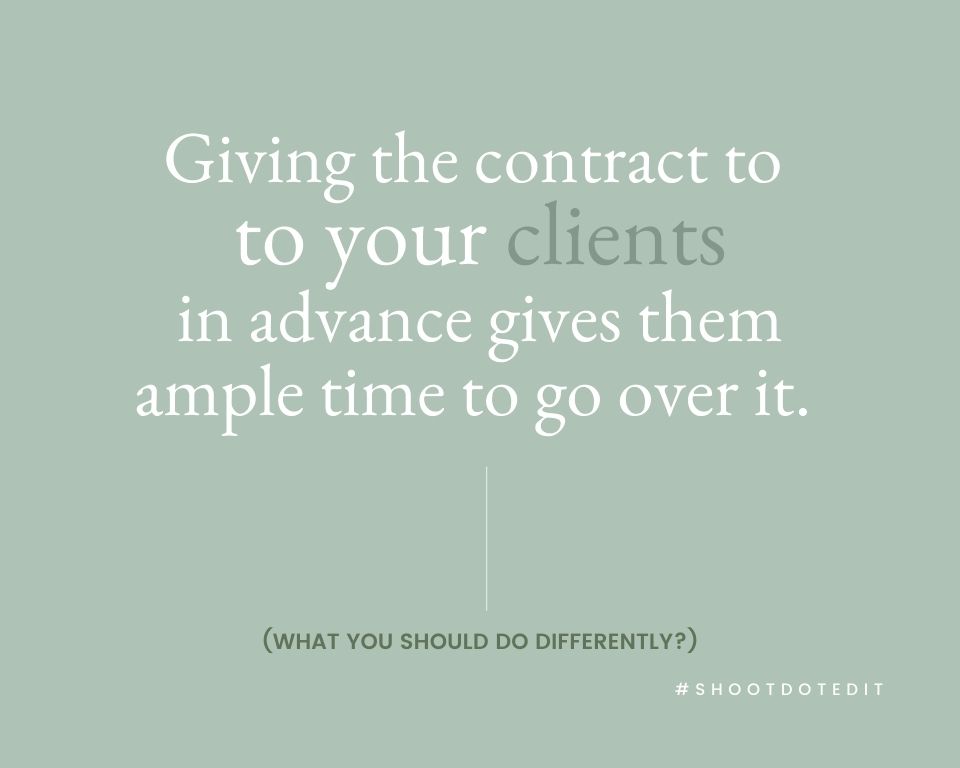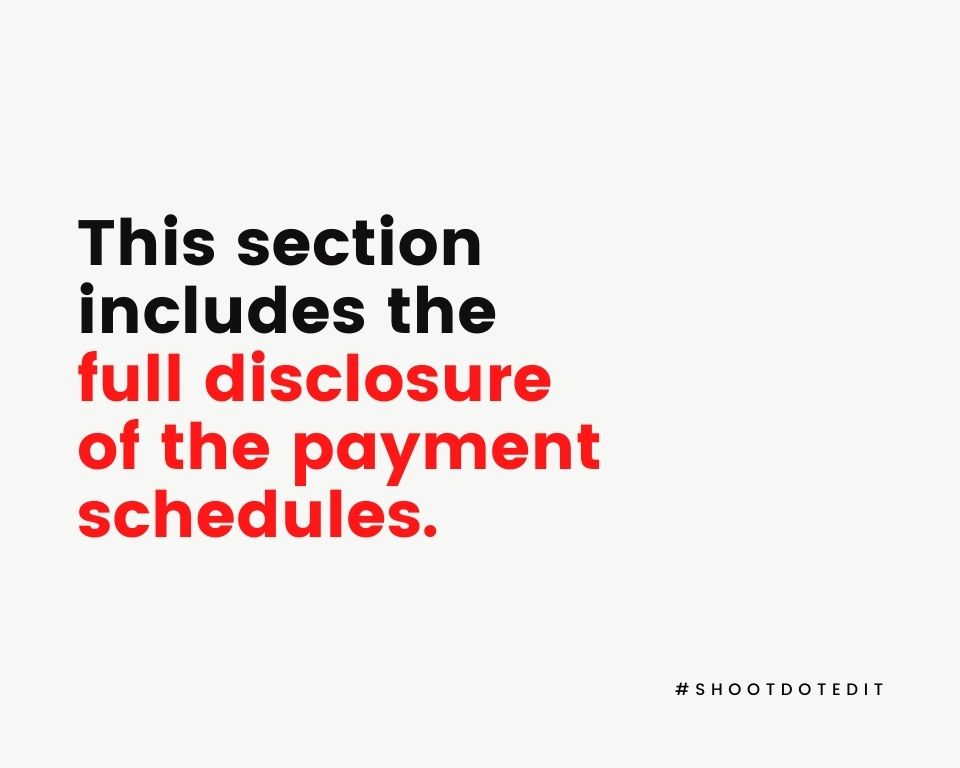
Drafting a contract is one of the first steps you take as you set up your wedding photography business and begin your journey of booking your ideal clients. “When should I have a wedding photography contract ready?” – this is a question many photographers ask when they are just starting out. Well, the answer is simple. From the very beginning, from your very first wedding. Operating in the wedding industry without legally binding contracts and insurance could be risky as you never know when things don’t go as planned. If you are one of those photographers who dreads getting into the legalities of it, you have come to the right place! In this blog, we have tried to simplify everything. We will walk you through a standard photography contract and the segments that you could include in it.
The Need for Wedding Photography Contract

No matter how vigilant you are, sometimes, miscommunication happens, or something goes wrong. So there you could face several kinds of issues. This is where a solid and standard photography contract can help you. In addition to that, try to have a lawyer look over your contract to ensure that you steer clear of legal loopholes that could cost you later.
Another reason for the need for a wedding contract is to set clear expectations – of deliverables, timeline, deadlines, and pretty much everything else that is involved in the transaction. Having all these clearly stated in a contract eliminates the scope of a misunderstanding between both parties. A contract sets certain ground rules – both for you and your clients.
Suggested Read: A Photography Business Checklist For Wedding Photographers
The Main Photography Contract
A standard photography contract could comprise several segments. In this section, we take a look at the main segment of the wedding contract.
1. When to Get it Signed & Why

Don’t wait till the wedding day to get your clients to sign the contract. Giving the contact to your clients in advance gives them ample time to thoroughly go over the contract. So if they have any questions or want to go over a specific segment – they have the freedom to do that rather than just rushing into things. Secondly, it makes everything you have discussed and agreed to bound by law. Instead of giving them a print version, you could also send the contract to your clients digitally. For a smooth process, we suggest getting the contract signed and the payment processed at the same time – and preferably, the contract signed first, and then the payment.
2. Major Points to Include in Your Contract
Non-Refundable Money or Deposits/Retainers
Now, let’s talk money! Starting with non-refundable money. Usually done during the contract signing process, this is an amount your clients give you in order to book you as their wedding photographer for a particular date. Ideally, your contract should clearly state what percentage of the amount they give you is going to be non-refundable. Different photographers go about the booking amount differently. If you have any doubts about what will work for your business, we suggest checking with your local attorney to get a clear understanding.
Payment & Task Completion Schedules

This section of the contract usually covers the ins and outs of payment schedules. It usually has all the information regarding the amount you will be paid, when you will be paid that full amount, and what will happen if your client doesn’t pay. We suggest analyzing your market and consider reaching out to your attorney to discuss this matter. In addition to that, also keep in mind to not wait till the day before the wedding or the wedding day to be paid the total amount. This scenario might not be the most reliable option and can end up costing you.
Now, moving on to what to do when the clients haven’t paid you. Firstly, the deadlines, the penalties, the course of action – everything needs to be precisely stated in the contract. You might excuse them with a late-fee fine for a minor delay. However, how you want to go about major and repeated payment delays is totally your call.
Another section that is included in this segment is the deliverables, deadlines, and task completion schedules. Again, apart from having it in your contract, it is also important to outline this section to your clients and inform them about when they will get the final products. This also helps you manage client expectations from the very start and makes things easier for you during the post-production phase. Also, while setting your deadlines, try to keep them as reasonable as possible and include a week or two as a buffer.
Cancellation and Rescheduling Plan
We can’t emphasize enough, but your standard photography contract needs to state your course of action for when a client cancels and reschedules the wedding. Life happens, and whatever be the reason, every once in a while, you might find yourself in a situation like where something prompts your couple to call off or reschedule the wedding. For when this happens, your plan needs to already be stated in your contract.
Again, how you deal with this situation is totally on you. What will you charge your clients – just the booking amount, whatever they have paid until then, half amount, or full amount – this is a decision you make as you see fit. While making this decision, you also need to consider how many days are left for the wedding. Your contract could even say something about your policy on rescheduling. Whether or not you want to give your couples the benefit of that, or if you charge a certain amount for that, is something you can decide as well.
Substitute Photographers Clause

You are 100% planned and prepared to photograph the upcoming wedding you have booked, but what if you got sick, or something happened, and you cannot make it to the venue? We cannot predict future events, but we can prepare for when they do happen. Usually, if due to any reason, you are not able to make it to the wedding and you want someone to cover for you, it needs to be stated in the contract even before you are in the situation.
When you are including a section about substitute photographers in your contract, remember to add information about who will have the final say regarding who will step in as a substitute. It usually makes sense to keep that authority to yourself – since whosoever will step in will be representing your brand.
Client Responsibilities
This segment of a standard photography contract mentions all the things and essential information that you require from your clients beforehand. Imagine walking into a venue and being handed over a list of guidelines about what you can or cannot do – for example, areas that are no-photography zones, areas where the use of flash is not allowed, permit requirements, or the need for liability insurance, etc. The list can go on. And to avoid these last-minute surprises, request your clients to give you all such information beforehand.
Suggested Read: Wedding Photography Liability Insurance Explained
Model Release Form
Now that we have gone through all the different aspects that constitute a standard photography contract, it is time to walk you through one more important segment – the model release form. It can be just a piece of paper or a series of documents depending on your requirements and technicalities. Here’s a brief understanding of it – “A model release form is a legal document that is often signed between photographers and their clients (usually the person whose photograph is being taken) to come to a written agreement on how the image will be used going forward.” Note that you cannot showcase the images from their weddings for marketing without your clients having signed the model release form.
Who Signs the Contract?
Once you have gone over the contract and it is time to get it signed, note that the bride and groom sign the contract, not their parents, not their siblings, but them. Unless they have a power of attorney to sign for them, only have the couple getting married sign the contract.
Simplify The Contract For Your Couple
Contract signing can be a nerve-racking process – especially for your clients. And they are not to be blamed. A legally binding photography contract form full of technical terms that you don’t fully understand can be intimidating. Therefore, making it all the more critical for you to simplify it and walk them through each aspect. Even if you are patient and trying to make things work, don’t assume that they will understand all aspects of it as you explain. Give them time to go over it. And most importantly, ask them if they have any questions.
Further Read: All You Need To Know Before Starting A Photography Business
We hope you found this article helpful! Do let us know your thoughts in the comments section below. At ShootDotEdit, we look forward to helping you grow as a professional. And to help lessen your post-production workload, we provide photo editing services that match your style. To learn more about how we can help, check out our pricing plans.
Please note: ShootDotEdit is here to provide quality content to help wedding photographers succeed. We are not legal professionals or insurance agents, and we are neither experts in these fields nor do we receive any benefits from any of the companies or advice mentioned in this article. If you are interested in learning more about wedding photography contracts as a US-based photographer, Professional Photographers of America is a trusted source that can help.



Leave a comment